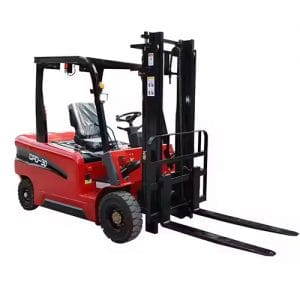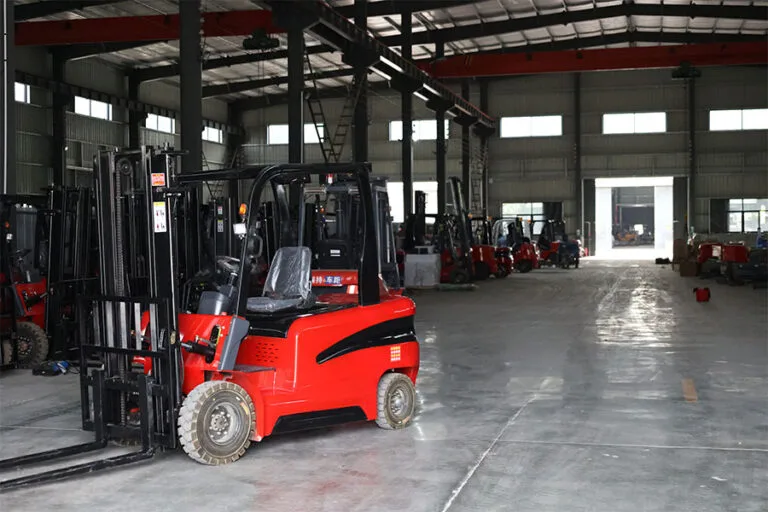Welcome to My Blog!
I’m thrilled to have you here! Before we dive into the content, let’s stay connected. Join me on my social media platforms for more insights, community engagement, and regular updates. Here’s where you can find me:
📌 Facebook: Shandong Huaying International Trade Co., Ltd.
Now, let’s embark on this journey together. I hope you find the content here not only insightful and engaging but also valuable to your interests. Let’s learn, grow, and connect!
Table of Contents
Introduction
In the world of modern warehousing, few innovations have had as significant an impact as the warehouse electric forklift. These efficient, eco-friendly machines are now a cornerstone of logistics operations across the globe. As warehouses evolve to become more automated and sustainable, the warehouse electric forklift continues to play a critical role in boosting productivity while reducing emissions and noise.
Gone are the days when gasoline-powered forklifts dominated warehouse floors. Today, businesses are turning to electric models for their versatility, reduced maintenance needs, and cost savings. But how much do you really know about these machines? From their surprising battery life to their intelligent features, there are countless facts that make these vehicles truly amazing.
This article delves into seven standout facts about the warehouse electric forklift that make it a must-have for any efficient warehouse operation. Whether you’re a warehouse manager, a logistics professional, or simply curious about industrial vehicles, this comprehensive guide will shed light on just how impressive these machines have become.
Fact 1: Warehouse Electric Forklifts Are Incredibly Energy-Efficient
One of the most compelling reasons companies are shifting to warehouse electric forklifts is energy efficiency. Unlike internal combustion forklifts, which consume fossil fuels, electric forklifts rely on rechargeable batteries. These batteries can power a forklift through an entire shift with a single charge, making them both cost-effective and environmentally friendly.
Electric motors have fewer moving parts than combustion engines, which means less energy loss through friction and heat. This allows a warehouse electric forklift to convert more power directly into movement, enhancing overall efficiency. For warehouses that operate multiple forklifts, the energy savings add up quickly.
Moreover, energy efficiency in these forklifts translates to longer battery life. Advanced battery management systems optimize charging and discharging cycles, allowing the forklift to operate consistently without performance dips throughout the workday.
Fact 2: They’re Designed for Indoor Warehouse Safety


Safety is paramount in warehouse operations, and the design of a warehouse electric forklift reflects this priority. These machines are ideal for indoor environments thanks to their zero emissions and low noise levels. This makes them safer for workers who operate in enclosed spaces.
Additionally, warehouse electric forklifts often come equipped with advanced safety features such as:
- Automatic braking systems
- Proximity sensors and cameras
- Ergonomic operator cabins
- Adjustable speed control for tight areas
The lack of tailpipe emissions also reduces the risk of carbon monoxide poisoning, which can be a concern with gas-powered forklifts. In tight warehouse aisles where visibility is limited and foot traffic is common, the safety features of an electric forklift make a significant difference.
Fact 3: Maintenance Costs Are Substantially Lower
One of the most overlooked advantages of a warehouse electric forklift is its low maintenance requirement. Combustion engines are complex and require regular oil changes, air filter replacements, spark plug servicing, and more. By contrast, electric forklifts have far fewer mechanical parts that can wear out.
This simplicity results in reduced downtime and maintenance costs over the forklift’s lifespan. Many businesses report a 30–50% decrease in maintenance expenses after switching to electric models. Furthermore, the electric drive systems are less prone to overheating and mechanical failure.
The regenerative braking system found in many models also contributes to longevity by reducing brake wear and returning energy to the battery. It’s an efficient cycle that keeps costs down and productivity up.
Fact 4: Battery Technology Has Transformed Warehouse Electric Forklifts
Battery innovation has been a game changer for the warehouse electric forklift. Lithium-ion batteries have largely replaced traditional lead-acid batteries, offering several performance enhancements:
- Faster charging times:Compared to older battery models, lithium-ion batteries charge significantly faster. While a traditional lead-acid battery may take up to 8 hours to fully charge, a lithium-ion battery can often be charged in under 2 hours. Many models also support opportunity charging, which means the battery can be topped up during breaks or shift changes—eliminating the need for full charge cycles or dedicated charging rooms.
- Longer operational life:A major concern with traditional batteries was their relatively short cycle life. Most lead-acid batteries last about 1,000 to 1,500 charge cycles. In contrast, lithium-ion batteries can exceed 3,000 cycles without a significant drop in performance. This longer lifespan contributes directly to cost savings and improved return on investment for any warehouse utilizing warehouse electric forklifts.
- No need for maintenance watering:Lead-acid batteries require regular watering to maintain their performance and prevent degradation. This maintenance task is time-consuming, labor-intensive, and, if neglected, can lead to safety hazards or equipment damage. Lithium-ion batteries are maintenance-free, removing this burden entirely and reducing downtime for warehouse operations.
- Improved energy density:Lithium-ion batteries are much more energy-dense than their predecessors. This means they can store more energy in a smaller package, making them lighter and more compact while still delivering high power. Additionally, energy delivery remains consistent even as the battery discharges. Unlike lead-acid batteries that lose power as they deplete, lithium-ion models maintain stable output throughout the shift.
Let’s take a look at a comparison between different battery types commonly used in electric forklifts.
Battery Comparison Table for Warehouse Electric Forklifts
| Battery Type | Average Runtime (Hours) | Charge Time | Maintenance Needs | Weight | Cost |
|---|---|---|---|---|---|
| Lead-Acid | 6–8 | 8–10 hrs | High | Heavy | Lower upfront |
| Lithium-Ion | 8–12 | 1–2 hrs | Low | Lightweight | Higher upfront |
| Nickel-Metal Hydride | 7–10 | 4–6 hrs | Moderate | Medium | Moderate |
As shown in the table, lithium-ion batteries provide the best overall performance, especially in terms of runtime and charging speed. While they may cost more initially, the return on investment is realized through lower maintenance and longer lifespan.
Many modern warehouse electric forklifts also support fast-charging stations, allowing them to recharge during breaks or shift changes. This minimizes downtime and helps businesses operate around the clock.
Fact 5: Warehouse Electric Forklifts Are Customizable and Smart


The warehouse electric forklift is not just a vehicle — it’s a smart tool that adapts to the needs of modern logistics. With the rise of Industry 4.0, many forklift models now come equipped with advanced software, telematics, and connectivity features.
These smart features include:
- Real-time location tracking
- Load sensing for automatic weight adjustments
- Operator behavior monitoring
- Remote diagnostics and predictive maintenance
Businesses can also customize forklifts based on specific warehouse needs. Whether it’s specialized attachments, different fork lengths, or unique tire configurations, the warehouse electric forklift is adaptable. This flexibility is particularly useful in diverse environments, from narrow aisles to cold storage facilities.
Moreover, these forklifts often integrate with warehouse management systems (WMS), allowing for optimized picking routes, improved inventory accuracy, and data-driven decisions.
Conclusion
The warehouse electric forklift is much more than just a replacement for its gas-powered predecessors — it represents a complete shift in how businesses handle material movement. From efficiency and safety to customization and smart features, these machines are essential tools for the modern warehouse.
As technology continues to advance, we can expect even more improvements in battery technology, automation, and software integration. For any business looking to improve warehouse operations while reducing costs and environmental impact, investing in a warehouse electric forklift is a smart and future-proof decision.
Whether you’re just exploring electric forklifts or planning to upgrade your entire fleet, now is the time to embrace the benefits these machines have to offer.
FAQ
What is the average lifespan of a warehouse electric forklift?
A well-maintained warehouse electric forklift can last between 8 to 10 years, depending on usage, environment, and battery type. Lithium-ion models often have longer lifespans due to less wear and tear on the battery and motor.
How long does it take to charge a warehouse electric forklift?
Charging time varies by battery type. Lead-acid batteries can take up to 10 hours, while lithium-ion batteries typically recharge within 1–2 hours. Fast-charging systems can reduce downtime even further.
Are warehouse electric forklifts suitable for outdoor use?
While they are primarily designed for indoor use, many models are equipped for limited outdoor work in dry conditions. However, for heavy-duty outdoor operations, diesel or gas models may still be more appropriate.
What is the cost of a warehouse electric forklift?
Prices range widely depending on size, brand, and features. Entry-level models may start around $15,000, while high-capacity, smart-equipped forklifts can cost upwards of $50,000. Despite the higher upfront investment, long-term savings in maintenance and fuel make them cost-effective.
How do I choose the right warehouse electric forklift for my operation?
Consider factors such as lifting capacity, aisle width, battery type, work hours per shift, and integration needs with your existing warehouse systems. Consulting with a forklift supplier or logistics expert can help match your operational needs with the right model.






